| [1]Rachner TD,Khosla S,Hofbauer LC.Osteoporosis: now and the future. Lancet.2011;377(3):1276-1287.[2]Harrop JS,Prpa B,Reinhardt MK,et al. Primary and secondary osteoporosis' incidence of subsequent vertebral compression fractures after kyphoplasty.Spine (Phila Pa 1976).2004;29(19): 2120-2125..[3]朱汉民.老年人骨折的流行病学及其对生命质量的影响[J].中华老年医学杂志,1993,12(3):168-171.[4]Rousing R,Andersen MO,Jespersen SM,et al.Percutaneous vertebroplasty compared to conservative treatment in patients with painful acute or subacute osteoporotic vertebral fractures: three-months follow-up in a clinical randomized study. Spine (Phila Pa 1976). 2009; 34(13):1349-1354.[5]Kado DM, Browner WS, Palermo L, et al.Vertebral fractures and mortality in olderwomen: a prospective study. Study of Osteoporotic Fractures Research Group. Arch Internal Med.1999;159: 1215-1220.[6]Lewis G. Injectable bone cements for use in vertebroplastyand kyphoplasty: state-of-the-art review. J Biomed MaterRes B Appl Biomater. 2006;76:456-468.[7]Boger A,Heini P,Windolf M,et al.Adjacent vertebralfailure after vertebroplasty: abiomechanical study of lowmodulus PMMA cement.Eur Spine J.2007;16:2118-2125.[8]Berlemann U, Muller CW, Krettek C. Percutaneous cementing techniques of the spine -- chances and limits. Der Orthopade.2004; 33(1):6-12.[9]He Z,Zhai Q,Hu M,et al.Bone cements for percutaneous vertebroplasty and balloon kyphoplasty: Current status and future developments.J Orthop Translat. 2014;3(1):1-11.[10]Granchi D,Cenni E,Savarino L,et al.Bone cement extracts modulatethe osteoprotegerin/osteoprotegerin-ligand expression in MG63 osteoblast-like cells.Biomaterials. 2002;23(11):2359-2365.[11]Delplace V,Tardy A,Harrisson S,et al.Degradable and comb-like PEG-based copolymers by nitroxide-mediate dradicalring-opening polymerization.Biomacromolecules.2013;14(10):3769-3779.[12]Agarwal S,Ren L.Polycaprolactone-Based Novel DegradableIonomers by RadicalRing-Opening Polymerization of 2-Methylene-1,3-dioxepane. Macromolecules.2009;42:1574-1579.[13]Jenny U,Anna F,Ann-Christine A.Adjustable Degradation Properties and Biocompatibility of Amorphous and Functional Poly(ester-acrylate)-Based Materials.Biomacromolecules. 2014; 15(7):2800-2807.[14]Xu Y,Shi Y,Ding S.A chemical approach to stem-cell biology and regenerative medicine.Nature. 2008;453:338-344.[15]Emre N,Coleman R,Ding S.A chemical approach to stem cell biology. Curr Opin Chem Biol. 2007;11:252-258.[16]Takahashi K,Yamanaka S.Induction of pluripotent stem cells from mouse embryonic and adult fibroblast cultures by defined factors. Cell. 2006; 126:663-676.[17]Kennedy JG,O'Grady P,McCarthy DR,et al.An investigation into the role of oxygen free radical scavengers in preventing polymethylmethacrylate- induced necrosis in an osteoblast cell culture.Orthopedics. 2000;23(5): 481-485.[18]Toker H,Ozdemir H,Balc H,et al.N-acetylcysteine decreases alveolar bone loss onexperimental periodontitisin streptozotocin- induceddiabetic rats.J Periodont Res.2012; 47:793-799.[19]Cao JJ, Picklo MJ,et al. N-acetylcysteine supplementation decreases osteoclast differentiation and increases bone mass in mice fed a high-fat diet.J Nutr.2014;144(3):289-296.[20]Tsukeoka T,Suzuki M,Ohtsuki C,et al.Mechanical and histological evaluation of a PMMA-based bone cement modified with gamma- methacryloxypropyltrimethoxysilane and calcium acetate. Biomaterials. 2006;27(21):3897-3903.[21]Sugino A,Ohtsuki C,Miyazaki T.In vivo response of bioactive PMMA-based bone cement modified with alkoxysilane and calcium acetate.J Biomater Appl.2008;23(3):213-228.[22]Tsukimura N,Yamada M,Aita H,et al.N-acetyl cysteine (NAC)-mediated detoxification and functionalization of poly(methyl methacrylate) bone cement.Biomater Appl. 2009;30(3):3378-3389.[23]Yamada M,Tsukimura N,Ikeda T,et al.N-acetyl cysteine as an osteogenesis-enhancing molecule for boneregeneration. Biomater Appl. 2013;34(6):6147-6156.[24]ISO 5833:2002 I.Implants for surgery-Acrylic resin cements.[25]孙强,郑家法,刘德南,等.聚甲基丙烯酸甲酯骨水泥最为抗肿瘤药物缓释载体的实验研究[J].中华肿瘤防治杂志, 2010,17(11):823-826.[26]Feng T,Pi B,Li B,et al.N-Acetyl cysteine (NAC)-mediated reinforcement of alpha-tricalcium phosphate/silk fibroin (α-TCP/SF) cement.Colloids Surf B Biointerfaces. 2015;136:892-899.[27]Ruediger T,Berg A,Guellmar A,et al.Cytocompatibility ofpolymer-based periodontal bone substitutes in gingival fibroblast andMC3T3 osteoblast cell cultures.Dent Mater.2012;28(10): e239-249.[28]ISO 10993 I.Biological evaluation of medical devices.[29]Zhang M,Wu C,Lin K,et al.Biological responses of human bone marrow mesenchymal stem cells to Sr-M-Si (M = Zn, Mg) silicate bioceramics. J Biomed Mater Res. 2012;100(11):2979-2990.[30]Guo JW,Ma Q,Cui Y H,et al.Synthesis and characterization of biodegradable copolymers P( AA-co-MDO) as non-phosphorous detergent builders.Acta Polymerica Sinica. 2012;(9):958-964.[31]Sadowska AM,Manuel-Y-Keenoy B,De Backer WA.Antioxidant and anti-inflammatory efficacy of NAC in the treatment of COPD: discordant in vitro and in vivo dose-effects: a review.Pulm Pharmacol Ther. 2007;20(1):9-22. [32]Zuin R,Palamidese A,Negrin R,et al.High dose N-Acetyicisteine in Patients with Exacerbations of Chronic Obstructive Pulmonary Diseases.Clin Drug Invest. 2005;25(6):401-408.[33]Pela R,Calcagni AM,Subiaco S,et al. N-acetylcysteine reduces the exacerbation rate in patients with moderate to severe COPD. Respiration. 1999;66(6):495-500. [34]Reichenberger F,Tamm M.N-acetylcysteine in the therapy of chronic bronchitis.Pneumologie. 2002;56(12):793-794. [35]Ernst P,Suissa S.N-acetylcysteine is unlikely to reduce hospitalization for chronic obstructive pulmonary diease.Eur Respir J.2003;22(5):865. [36]Kuleci S,Hanta I,Kocabas A,et al.The effect of different treatment modalities on oxidative stress in COPD.Adv Ther.2008;25(7): 710-717.[37]Shinzato S,Nakamura T,Kokubo T,et al.A new bioactive bone cement: effect of glass bead filler content on mechanical and biological properties.J Biomed Mater Res. 2001;54(4):491-500. [38]包利,唐海,王炳强,等.CPC/PMMA双向骨水泥性能及生物相容性的初步研究[J].中国骨质疏松杂志,2012,18(5):420-424.[39]崔维,刘宝戈,王磊,等.经皮椎体后凸成形术中球囊扩张体积与骨水泥注射量的相关性分析[J].中华外科杂志, 2015,53(4):289-293.[40]晏雄伟,张洪燕.椎体后凸成形治疗骨质疏松性脊柱骨折:注入骨水泥的要点[J].中国组织工程研究, 2014,18(9):1471-1476.[41]Kim SY,Jeon SH.Setting properties, mechanical strength and in vivo evaluation of calcium phosphate-based bone cements.J Ind Eng Chem. 2012;18(1):128-136.[42]全仁夫,倪月明,郑宣,等.椎体成形术骨水泥与松质骨的近期与远期改变的实验研究[J].中华骨科杂志, 2013,33(11):1155-1163.[43]Peng W,Bin P,Jin-Ning W.Preparation and properties of calcium sulfate bone cement incorporated with silk fibroin and Sema3A- loaded chitosan microspheres. Front Mater Sci. 2015;9(1):51-65.[44]Fredric, Andrew.Mordem Superabsorbent Polymer Technology, Wiley-VCH, New York,1998.[45]Yuki T,Atsushi S,Toshiki M,et al.Acceleration of calcium phosphate formation on bioactive PMMA-based bone cement by controlling spatial design.Mater Sci Eng. 2010;30(4):624-630. [46]Shinzato S,Nakamura T,Ando K,et al.Mechanical properties and osteoconductivity of new bioactive composites consisting of partially crystallized glass beads and poly(methyl methacrylate).J Biomed MaterRes.2002;60(4):556-563. [47]Charnley J.Anchorage of the femoral head prosthesis to the shaft of the femur. J Bone Joint Surg Br.1960;42:28-30.[48]Yamada M,Ogawa T.Chemodynamics underlying N-acetyl cysteine-mediated bone cement monomer detoxification.Acta Biomater. 2009;5(8):2963-2973.[49]Lin Y,Qu JF.The research progress of polymerization of 1,3-two oxygen heptyl ring and their derivatives.World Sci Tech R&D. 2008;30(1):1-6. |
.jpg)
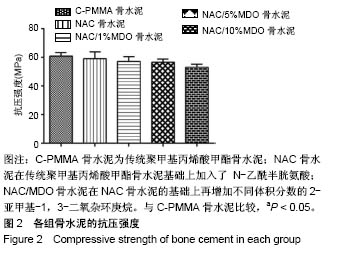
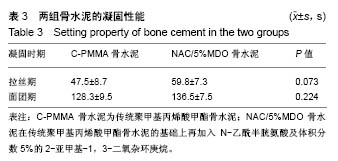
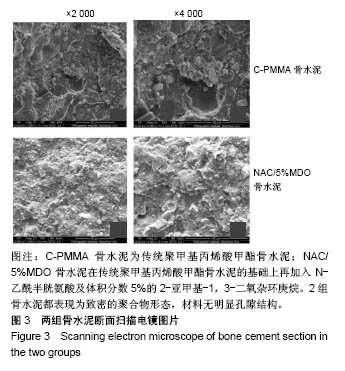
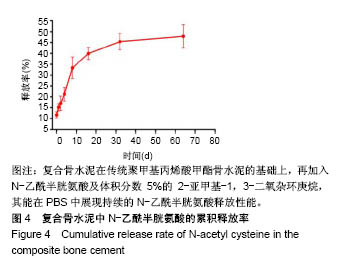
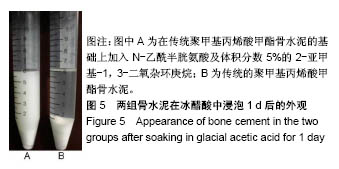
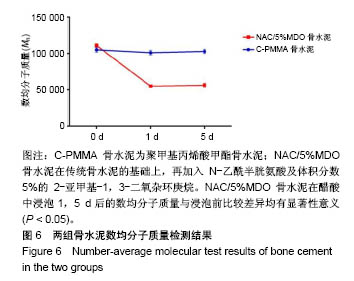
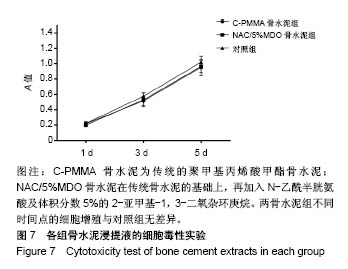
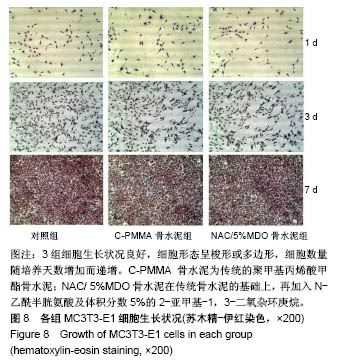
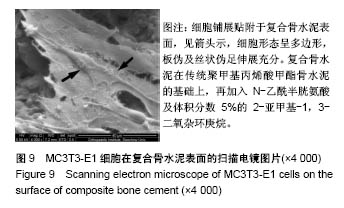
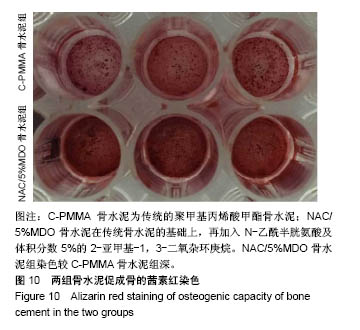


.jpg)
.jpg)
.jpg)